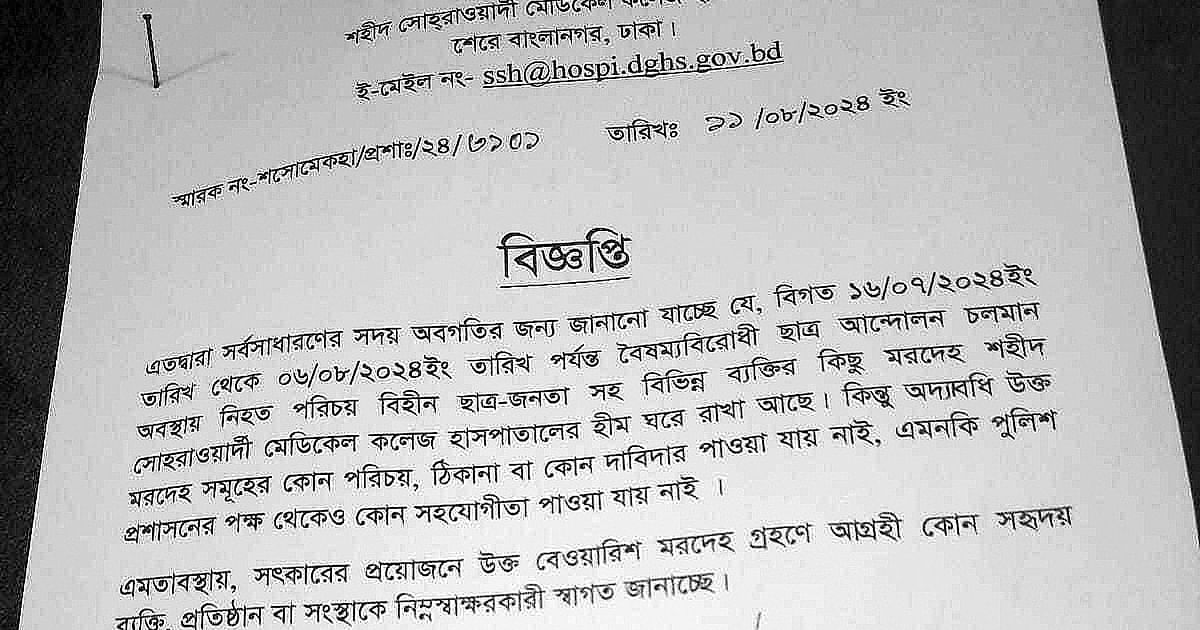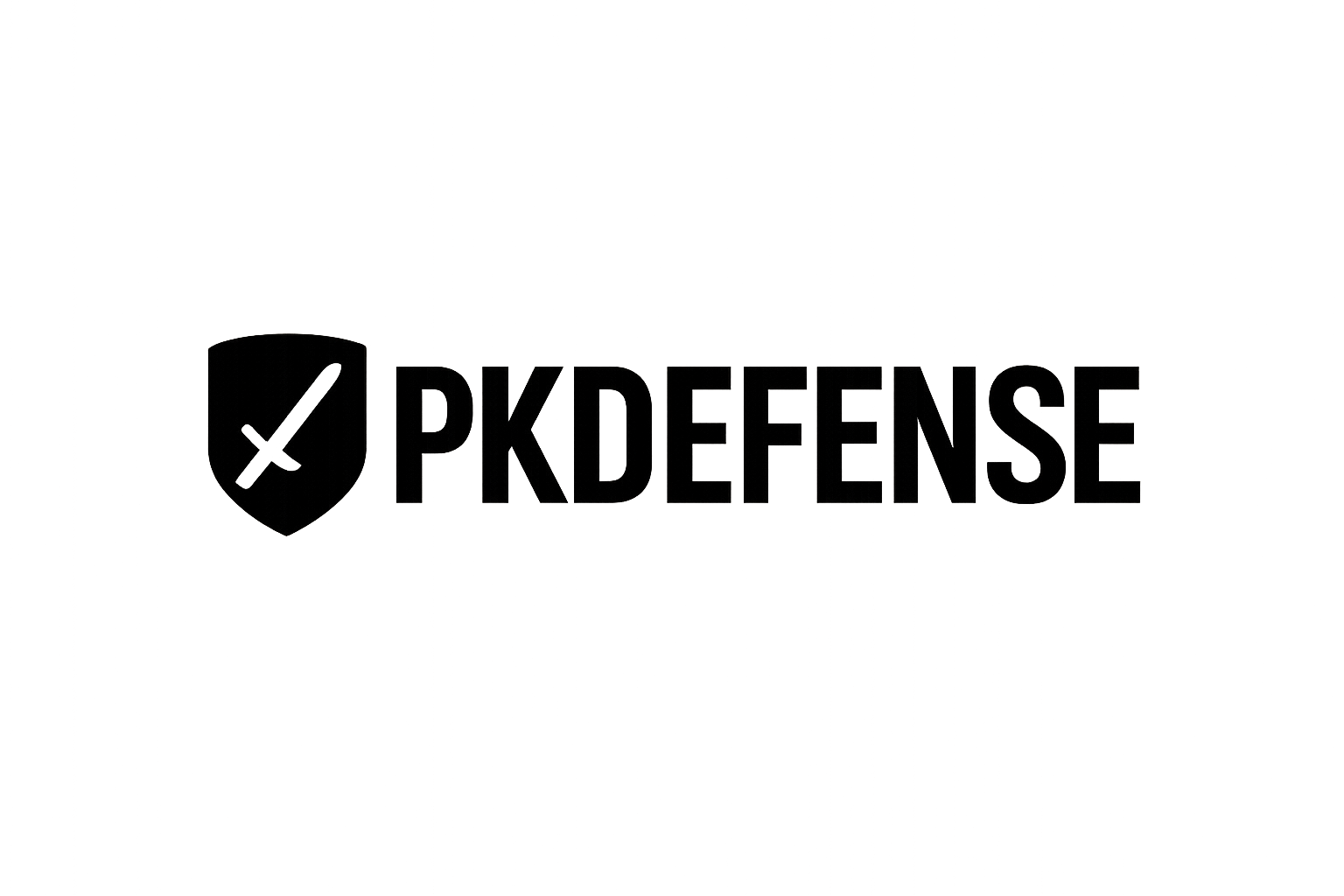Saif
Senior Member
- Joined
- Jan 24, 2024
- Messages
- 15,424
- Nation

- Axis Group


Killed in students’ movement: None claims bodies
Eight bodies are also being preserved at the Dhaka Medical College morgue as details of the deceased remain unknown.
Killed in students’ movement: None claims bodies
Shishir MoralDhaka
Updated: 15 Aug 2024, 09: 12

A notice about unclaimed bodies at Shaheed Suhrawardy Medical College and Hospital Prothom Alo
Relatives are going from one to another hospital in search of their dear ones as some people, who joined the movement of the Student Against Discrimination, have not yet returned home.
In the meantime, several bodies are still in the morgues with the hospital authorities finding none claiming those bodies.
Visiting Shaheed Suhrawardy Medical College and Hospital on Monday, it was learned that three bodies are still in the morgue though people come every day searching for their beloved ones.
Eight bodies are also being preserved at the Dhaka Medical College morgue as details of the deceased remain unknown.
The bodies left at the Shaheed Suhrawardy Medical College morgue arrived between 16 July and 6 August. Since nobody claims the bodies, hospital director Md. Shafiur Rahman issued a notice on the matter.
It said there were several unidentified bodies at the hospital’s mortuary, arrived during the ongoing Students Against Discrimination movement. No details of the deceased have been found. None claimed the bodies either. Even the hospital authorities received no cooperation from the police. So the hospital authorities welcome individuals or organisations interested in conducting the funeral of these unclaimed bodies.
This correspondent saw one such advertisement on the notice board of the director’s office and another on the mortuary’s door on Monday.
According to data provided by the hospital authorities, 30 bodies arrived in the hospital during clashes and violence centering the recent movement between 18 July and 22 July. Twenty-one of the deceased were documented and eight-nine bodies remained undocumented. Twenty more bodies arrived between 4 August and 6 August and all of those bore bullet marks.
Speaking to Prothom Alo on Monday, hospital director Md. Shafiur Rahman said, “Still there are several unclaimed bodies at the morgue. We are in a bit of trouble as the bodies might get rotten.”
The in-charge of the mortuary, located at the ground floor of the hospital, told Prothom Alo there were five bodies, but relatives took two of those bodies. One of the three deceased was about 35 years old while the remaining two were 18-19 years who, according to the hospital director, were students.
When this correspondent was talking to the in-charge of the mortuary, a certain youth, Ahsanullah Alif Khan, arrived and said he was searching for his brother and he wanted to see the bodies or the photo of the bodies. The in-charge along with an official showed the youth and this correspondent the photographs of the bodies, he then assured that none of the three deceased was his brother.
Ahsanullah Alif Khan was from Trishal, Mymensingh. He works at an apparel factory in Gazipur. His brother's name was Ashikur Rahman Khan, 31, who was a wage earner.
Showing the photograph of his brother, Ahsanullah Alif Khan told Prothom Alo, “His younger brother came to Dhaka on 1 August to join the movement but never returned.”
Previously, he searched for the body of his brother at the Dhaka Medical College morgue twice and at the Mugda Medical College and Hospital, but he found nothing. Now, he does not understand where he could find his brother.
Moments later, the conversation with Ahsanullah Alif Khan ended when another man of nearly 40 sat next to this correspondent.
Asked why he was there, the man replied one of his relatives had gone missing since the movement and he was searching for his relative from one to another hospital.
When asked about the details of his relative, the man left the mortuary hurriedly.
Shishir MoralDhaka
Updated: 15 Aug 2024, 09: 12
A notice about unclaimed bodies at Shaheed Suhrawardy Medical College and Hospital Prothom Alo
Relatives are going from one to another hospital in search of their dear ones as some people, who joined the movement of the Student Against Discrimination, have not yet returned home.
In the meantime, several bodies are still in the morgues with the hospital authorities finding none claiming those bodies.
Visiting Shaheed Suhrawardy Medical College and Hospital on Monday, it was learned that three bodies are still in the morgue though people come every day searching for their beloved ones.
Eight bodies are also being preserved at the Dhaka Medical College morgue as details of the deceased remain unknown.
The bodies left at the Shaheed Suhrawardy Medical College morgue arrived between 16 July and 6 August. Since nobody claims the bodies, hospital director Md. Shafiur Rahman issued a notice on the matter.
It said there were several unidentified bodies at the hospital’s mortuary, arrived during the ongoing Students Against Discrimination movement. No details of the deceased have been found. None claimed the bodies either. Even the hospital authorities received no cooperation from the police. So the hospital authorities welcome individuals or organisations interested in conducting the funeral of these unclaimed bodies.
This correspondent saw one such advertisement on the notice board of the director’s office and another on the mortuary’s door on Monday.
According to data provided by the hospital authorities, 30 bodies arrived in the hospital during clashes and violence centering the recent movement between 18 July and 22 July. Twenty-one of the deceased were documented and eight-nine bodies remained undocumented. Twenty more bodies arrived between 4 August and 6 August and all of those bore bullet marks.
Speaking to Prothom Alo on Monday, hospital director Md. Shafiur Rahman said, “Still there are several unclaimed bodies at the morgue. We are in a bit of trouble as the bodies might get rotten.”
The in-charge of the mortuary, located at the ground floor of the hospital, told Prothom Alo there were five bodies, but relatives took two of those bodies. One of the three deceased was about 35 years old while the remaining two were 18-19 years who, according to the hospital director, were students.
When this correspondent was talking to the in-charge of the mortuary, a certain youth, Ahsanullah Alif Khan, arrived and said he was searching for his brother and he wanted to see the bodies or the photo of the bodies. The in-charge along with an official showed the youth and this correspondent the photographs of the bodies, he then assured that none of the three deceased was his brother.
Ahsanullah Alif Khan was from Trishal, Mymensingh. He works at an apparel factory in Gazipur. His brother's name was Ashikur Rahman Khan, 31, who was a wage earner.
Showing the photograph of his brother, Ahsanullah Alif Khan told Prothom Alo, “His younger brother came to Dhaka on 1 August to join the movement but never returned.”
Previously, he searched for the body of his brother at the Dhaka Medical College morgue twice and at the Mugda Medical College and Hospital, but he found nothing. Now, he does not understand where he could find his brother.
Moments later, the conversation with Ahsanullah Alif Khan ended when another man of nearly 40 sat next to this correspondent.
Asked why he was there, the man replied one of his relatives had gone missing since the movement and he was searching for his relative from one to another hospital.
When asked about the details of his relative, the man left the mortuary hurriedly.










































